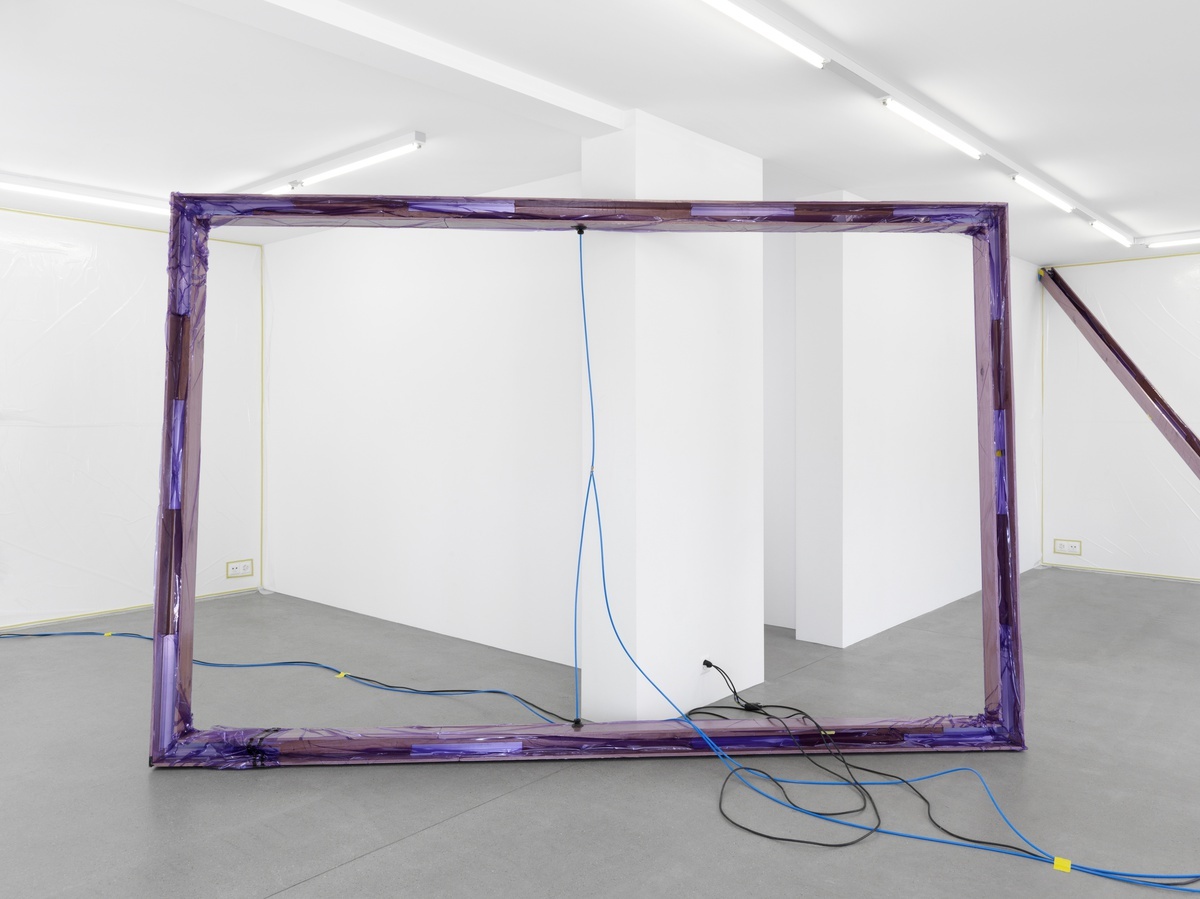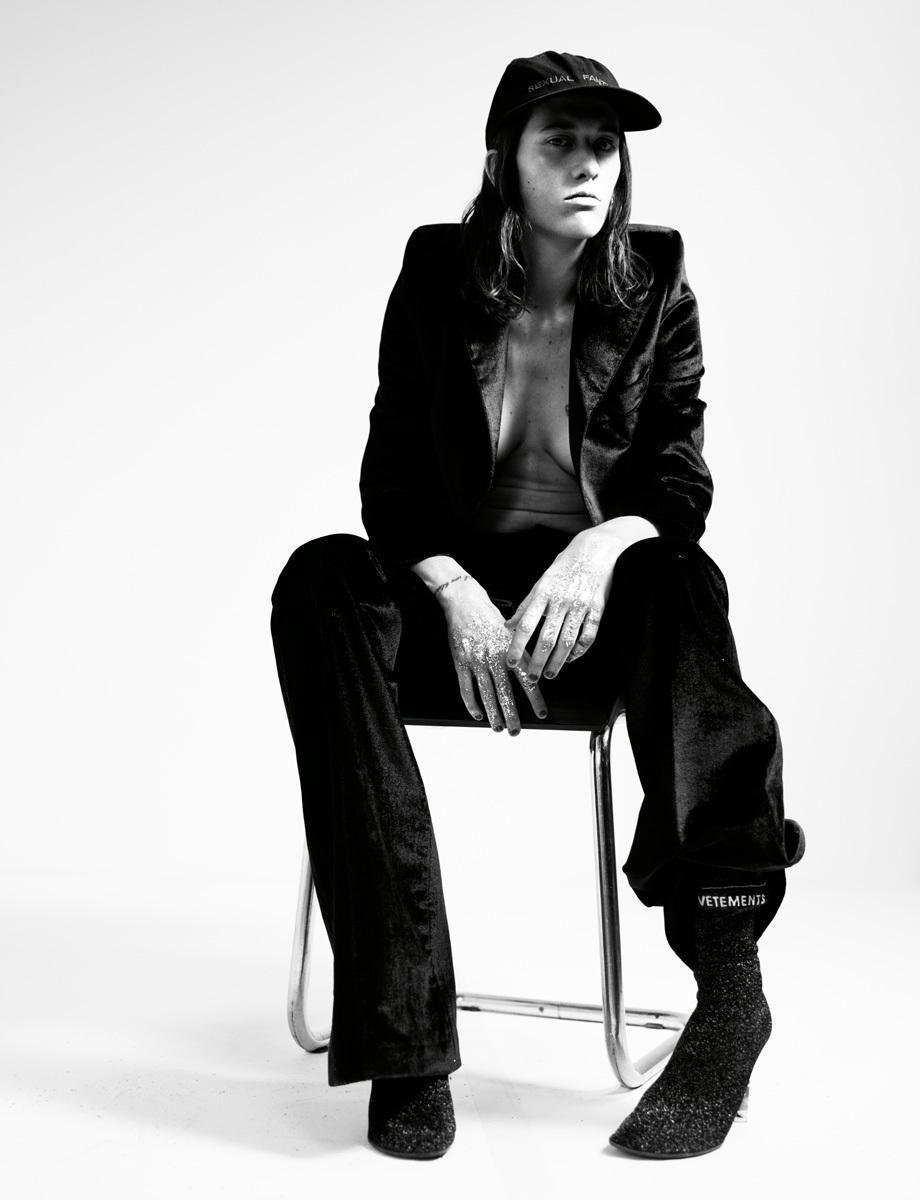Last month, Demna and Guram Gvasalia, the head designer and CEO of Paris’s most influential avant-garde brand, Vetements, announced they would be relocating the design collective to Zurich, a city without a high-profile fashion presence. “Paris kills creativity. Its environment with the ‘bling bling’ is destructive. I’m done with the whole showing-off in fashion and the superficial glamor,” Guram told Swiss paper Tages Anzeiger. “Taxes are obviously another reason for the move,” he added.
The fiscal advantages of basing a business in Switzerland are enticing (it has one of the lowest tax rates for foreign corporations and individuals of any developed country in the world). But the financial incentive to move was “not the most important one,” Guram emphasized. So why else would a major brand, whose head designer also serves as creative director to one of Paris’s most historic houses, Balenciaga, uproot from Europe’s long-reigning fashion capital?
Geography might have something to do with it. Zurich is closer to Central Europe and Italy than it is to the Western Europe’s fashion capitals. Perhaps this is the break the collective is looking for: away from London and Paris and closer to the rebellious youth culture of Russia, and the Gvasalias’ native Georgia?
Zurich, the industrial capital of Switzerland and its largest city, is also routinely voted one of the best cities in the world for quality of life. It is an hour’s flight from most other major cities in Europe. And it has a rich history of cultivating artistic exploration. The Dada movement was founded in the city in 1916, when the First World War was destroying much of Europe. As as result, many artists and intellectuals made their way to neutral Switzerland. At that time, Zurich, a gathering place of exiles, became a center of the European avant-garde.
Zurich’s art scene is still thriving. The city has a multitude of galleries and major museums (the Kunsthaus, the Kunsthalle, the Migros Museum of Contemporary Art). It is the birthplace of Hauser & Wirth and before that, the mythic Bruno Bischofberger and Amman galleries. Zurich’s art spaces have fostered the rise of major contemporary artists such as Fischli Weiss, Ugo Rondinone, Urs Fischer, and Pipilotti Rist.

Zurich might be the only city in the world where, in a single building, national institutions and major art galleries coexist and present world-class contemporary art. If Paris kills creativity, Zurich fosters it.
Markus Schmutz, from the art bookstore Kunstgrifff, mentions that another draw to Zurich is its major art school, Zurich University of the Arts (ZHdK). The school was founded in 2007 (following a merger of two established art schools) and moved into a new home in the west of Zurich in 2014. The city has just finished construction of a new building, worth $500 million, which the city hopes will help the university compete with the best art schools in the world — much like the how the Swiss Federal Institute of Technology (ETH) has become an international brain trust where globally renowned professors converge with the best international students.
There is also a unique appreciation for the old among Zurich’s new creatives, a fetishization of the classic. For instance, when the belovedly kitschy bar Olé Olé (a Zurich institution since 1966) was about to close in 2012, three young women with hospitality backgrounds — Sonja Huwiler, Elena Nierlich, and Ramona Bolzl — stepped in and took the spaces over, keeping the old crowd and bringing in new regulars. The same thing happened with Longstreet Bar, a former strip club that’s now a buzzing nightlife venue. Zurich thrives on this constant mixing of different communities and generations.
“Because of the size of the city, everything and everybody is accessible and if you think about the kind of cultural access we have for such a small city, it is better than anywhere else in the world,” says gallerist Maria Bernheim, who opened her own namesake space in Zurich a year ago. “Somehow we still think that everything is possible and that there are no rules. This was the home of Dada, I guess.” Cabaret Voltaire, where the Dadaists hung out in the 1920s, still exists.
The coming together of different social groups (financiers, artists, graphic designers, scientists, and researchers) is also what Niels Olsen pinpoints as one of Zurich’s trademarks. He’s a perfect example of this cross-pollination himself. He is a curator who works at the Swiss Federal Institute of Technology. “Together with Fredi Fischli, I curate a program called gta exhibitions at ETH Zurich,” he explains, “It’s an institution linked to the architecture department where we organize both architecture and art exhibitions. The great thing about the ETH is its international network — there are many professors from all over the world that fly in every week. It is extremely active and our shows reach students that are very curious.”
Olsen also speaks about Zurich’s rich artistic and architectural past. “I’m very inspired by Zurich’s tension between its charged cultural history and the contemporary,” he says. “There’s an active young scene and at the same time Zurich’s cultural history is still present. Zurich has been an important hub for the avant-garde. For example, the Swiss art historians Carola and Sigfried Giedion brought Jean Arp, Le Corbusier, and James Joyce to work here in the early 20th century. As a curator I love going back in time to discover Zurich’s past — the outlaw painter Friedrich Kuhn, the postmodern architects Trix and Robert Haussmann. We try to bring these protagonists into the light of the contemporary. Beatrix Ruf’s radical program at Kunsthalle Zurich has also shaped the contemporary debate and our curatorial work here.”
Ruf ran contemporary exhibition center Kunsthalle Zurich from 1998 until 2014. The building the institution occupies, the famous Loewenbrau Areal, is also home to established contemporary art galleries including Hauser & Wirth and Eva Presenhuber, younger galleries like Gregor Staiger, art book publisher JRP Ringier, and the Migros Museum for Contemporary Art.
Not far from this giant art complex, younger galleries — interestingly, nearly all run by women — have opened in the past few years: Karma International is across the river while Bolte Lang and Maria Bernheim are on the same street, the Limmatstrasse.

Bernheim is the newest arrival to the neighborhood. She opened her gallery last year, and among the artists she shows is Mitchell Anderson, who arrived in Zurich nine years ago from Marfa, Texas. Along with pursuing his own artistic practice, Anderson has opened his own exhibition space, Plymouth Rock, with the goal of providing a fast-moving, reactive space in which he can show his friends’ work almost as soon as they’ve made it. “There’s a culture of artist-run spaces in Zurich and Switzerland which makes it conducive to running one,” he says.
“Sometimes, galleries and institutions are fast to pick up on things and sometimes not. So I think one really doesn’t get a sense of Zurich without knowing what’s going on at the artist-run spaces like Plymouth Rock, UPSTATE, Taylor Macklin, etc.,” says Mitchell, “I gave local artists like Urban Zellweger and Miriam Laura Leonardi their first solo exhibitions, but I also organized the first Swiss exhibition of the late American artist Jeremy Blake. For me it’s a solid platform to constantly be pushing ideas out internationally and bringing some in.”
So yes, maybe this mini melting pot by the lake is a good refuge for Demna and his Vetements team to work in. As Lukas Haller, from JRP Ringier says, “In Zurich, we are like the seven dwarves working behind the Alps. We do our thing”. In Zurich, and in Switzerland as a whole, there is still a feeling that one can work hard calmly, focused in ideal conditions and then export the results. It is a Protestant town after all.
But Lovis Caputo, one half of design duo Kueng Caputo, says that sadly, young creatives are increasingly being pushed out of their studios in Zurich, as big international companies like Google move in. It’s the same story in Zurich as it is in Berlin or New York: chain stores are now opening in streets that used to have bad reputations. Artists have to move out because their old studio buildings are being sold or destroyed. And, of course, they can’t afford the new buildings’ rents.
As a result, Lovis says, “diversity is getting lost.” Increasingly, she says, “only large companies can afford this city and, of course, there is no time to question things because we all are busy working so we can afford it. If everybody was able to take two steps back for vision there would be so much more life, sex, and rock ‘n’ roll — and power to stop the extreme right movements rising, not just in France or Berlin but in Switzerland, too.”
Interestingly, before Vetements, there was another trend-setting design collective in Zurich. In the 1970s, Sissi Zoebeli and her Thema Selection collective offered clothes for women made from men’s fabrics, playing with the idea of androgyny and the work uniform. They made clothes in which to rebel against the status quo. Around the collective you could find Sigmar Polke and Martin Kippenberger (who modeled for one campaign), the curator Bice Curiger, and…Catherine Deneuve.
Thema Selection meant more than just clothes. Its members helped put together feminist plays, they organized art exhibitions, and they fought for housing rights. The store is still in the old town today and a book, called FEMALE CHIC, which documents the story of the label and its members was just published.
Thema Selection arrived in Zurich at a very conservative time as a tiny business that grew and always valued more than just style or a look. It represented a social, political, and cultural identity. Will Vetements be able to use Zurich as a base to think about these issues too, in the turbulent political environment of 2017?
Credits
Text Fabienne Stephan
Photography Willy Vanderperre
Fashion Director Alastair McKimm
All clothing Vetements fall/winter 16
[i-D The Futurwise Issue]
